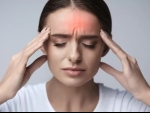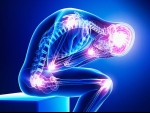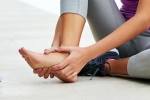Home » Blog
| Stem Cell, PRP, Acupuncture in Queens & Long Island, New York
Blog | Stem Cell, PRP, Acupuncture in Queens & Long Island, New York
The cause of migraines is still not well understood - despite migraines being one of the most widespread chronic pain conditions. Migraines are blamed on many different factors including Family history of migraines, Hormonal changes, Foods, drinks, or additives, Changes in sleep pattern, changes in the environment, Stress, and more...
Read more
Though degenerative disc disease can cause debilitating neck or back pain which may also radiate into the arm or leg, there are many treatment options. Some treatments may be more beneficial and effective than others based on the individual, so here are several options to consider trying in order to reduce pain.
Read more
Plantar Fasciitis - It’s the most common cause of pain on the bottom of your heel. The ligament that connects the front and back of your foot and supports your arch gets swollen and irritated. Though it’s hard to know exactly what causes it, you’re more likely to get it if you repeat the same impact on your feet (when you run, for example). It’s more common when you start out.
Read more
When our back hurts, we instinctively believe it’s because we’ve injured the area. After all, most pain works this way. When we cut our fingers, we see blood and feel pain. When we get the flu, our body hurts as it battles the virus. But persistent back pain is different. Decades of research prove that there simply isn’t a close connection between the condition of the spine and the likelihood of experiencing pain.
Read more
A herniated disc in the upper back, also called a thoracic herniated disc, can cause a variety of symptoms including pain, numbness, and weakness. While sharp, axial back pain that worsens with activity is most common, other signs and symptoms can include:
1-Burning and/or electric-like pain that localizes to the back or radiates circumferentially around the chest or abdomen. 2-Similar shock-like pain can radiate into the legs. 3-Sensory disturbances, including tingling and numbness, may be experienced at or below the level of the herniated disc.
Read more
Heart Attack - Arm or shoulder pain can be a sign, especially if you also have pain or pressure in the center of your chest and shortness of breath. A heart attack can be sudden, but sometimes it’s gradual. The feeling might last a few minutes, or stop and return. Your stomach, jaw, back, or neck also might hurt. You could also get sick to your stomach, lightheaded, and clammy with sweat. Call 911 if you notice these symptoms.
Read more
Find your sweet spot by learning how to push yourself, but not too far. Acute pain is pain that indicates something is wrong. It has a specific precipitant (injury, infection, or illness) and subsides within a few days to about a month. In contrast, chronic pain is pain that is ongoing; with pain signals that serve no useful physiological purpose yet remain active in the nervous system for months and often years, with no end-point. It’s not unlike a smoke detector that becomes stuck in the “on” mode, continuously sounding a harrowing alarm at high volume. Chronic pain is a disorder unto itself.
Read more
Your every day habits can play a role in developing chronic back pain. Here are a few simple things to keep in mind each day to reduce back pain. 1. Support Your Spine at Your Desk - Compared to standing, sitting places increased stress on your spine and spinal discs. So prolonged sitting with poor postures, such as slouching forward, may contribute to back pain.1 Here are a few tips to better support your lower back while you sit: Keep knees bent at about a 90-degree angle with feet flat on the ground. If needed, adjust your seat height so that your hips are about the same height as or slightly higher than your knees, which reduces stress on your lumbar spine.
Read more
Your Shoes - High heels, for example, put more pressure on the balls of your feet, which can thin your foot’s natural padding where you need it most. Avoid heels higher than 2 1/4 inches when you’re going to do a lot of walking. Flip-flops and overly pointed or flexible shoes also could lead to foot pain. You can avoid this if you match the shoe to the activity and make sure of proper fit and support.
Read more
Posted on: 04-Oct-2021 | No of views: 2690
When we think of pain, we usually think of injury or illness, but it's actually common to experience real physical pain without an injury being present! It’s natural when we think about pain to associate it with hurting ourselves, typically we think of an injury that causes pain. However, pain can occur without any injury, or even after an injury has healed. Essentially this is what chronic pain is: pain that is ongoing for a long period of time, typically thought to be three months or more, having passed the usual healing time.
Read more
Love this Post? Spread the World






















